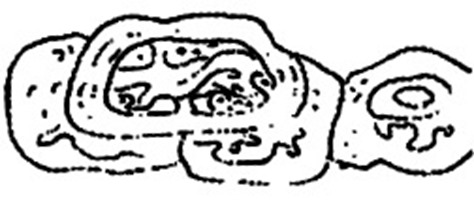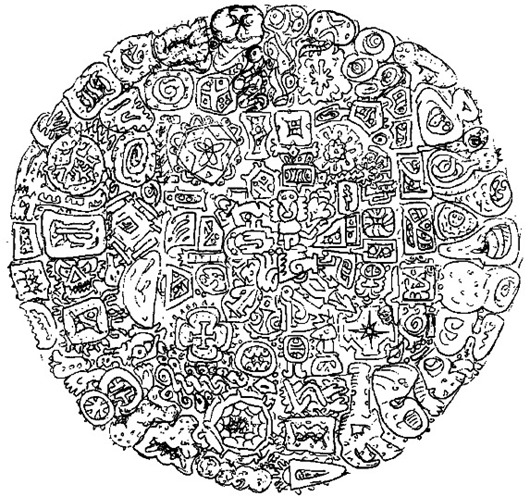Adam Blatner
Words and Images from the Mind of Adam Blatner
Cross-Section of Images Crossing the Corpus Callosum
Originally posted on July 24, 2013
The brain is, in my thinking, not a manufacturer of thoughts, but rather a receiver. It picks up transmissions from what David Bohm calls the “implicate order.” (I wonder, though, if he ever recognized the profound dis-order that operates in that realm, mixed with certain kinds of order.) Here’s my drawing of three perspectives on the relations of right and left brain:
You’ll notice between the right and left lobe there’s a sort of connection that has the Latinized name, “the corpus callosum.” It’s a bundle of nerves that carry messages back and forth between the right and left hemispheres of the cerebrum. The picture below offers a sort of diagram or schematic of the images that typically pass over the corpus callosum over the course of a few seconds (when the brain is excited) or few minutes. The right brain presents to the language-ing parts of the mind the fertile flow of images, and the right brain further focuses and reduces the intensity of this flow. Otherwise we’d go mad with the full mystical mind-blowing-ness of what the mind potentially can perceive. (Part of evolution involves our minds learning to tolerate and process constructively much more information than it used to.)
It’s impossible to fully represent a thought or image as if it were a thing, but I’ll try anyway. There’s a side view of a whole thought:
I you would cut that across like a loaf of bread, you’d get a “cross section,” which shows you the inside as well as the outside boundaries. Below is a cross-section of the whole bundle of ideas that cross over the corpus callosum. It’s expressed as a mandala of many different thoughts transferring from right to left, some from left to right. As cross-sections you don’t see the whole thought, but rather a slice through, across. , thoughts that wobble and squirm. Contemporary neuroscience is nowhere near able to capture the contents of mind in any form, only rather as “echoes” that register that certain parts of the brain, the receiving-transmitting centers, are stimulated. The picture below offers you a sort of flash of what this dynamic looks like. It’s experienced by the owner of the brain as a diffuse idea that occurs, pops into the mind, a complex of ideas such as: “I wonder what God’s about and if He is anything like my dad? Nah. Maybe a little. I don’t know.” Plus a bunch of intuitions, many of which have not yet found ways for being expressed in words.
Whaddaya think of this, eh?



Leave a Reply